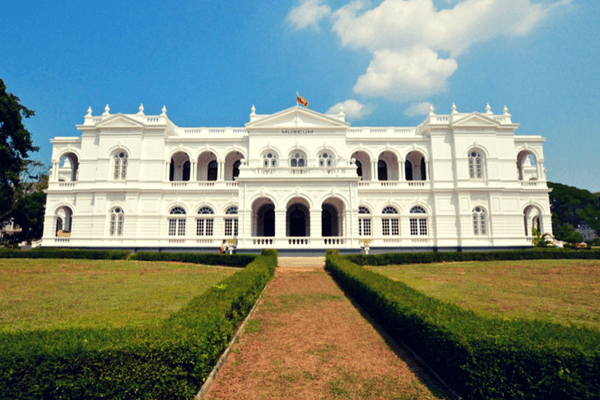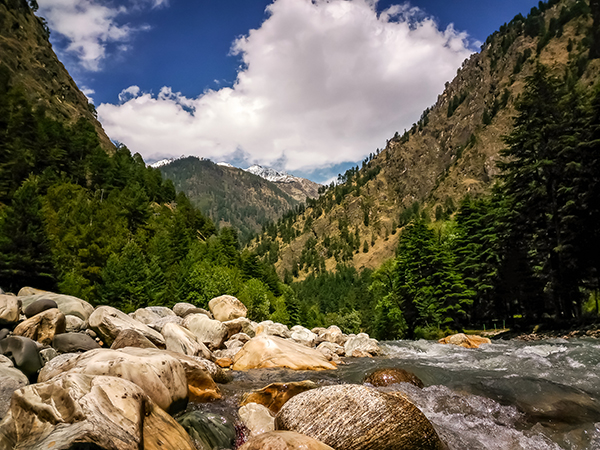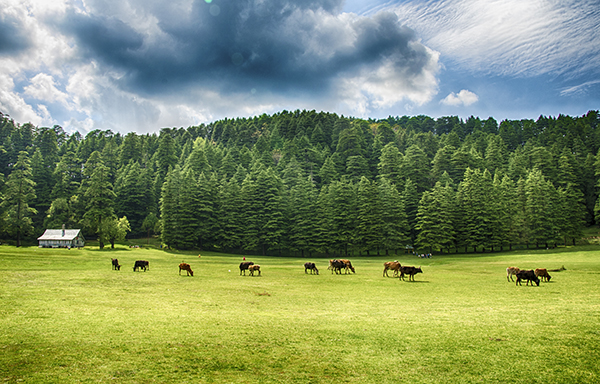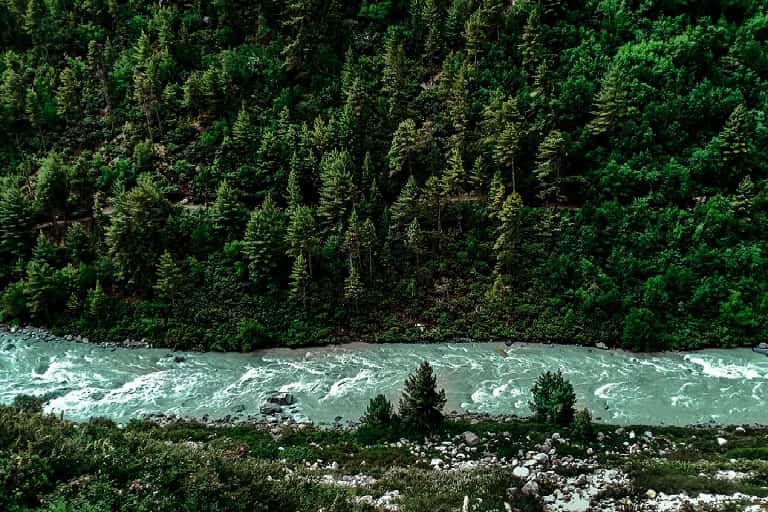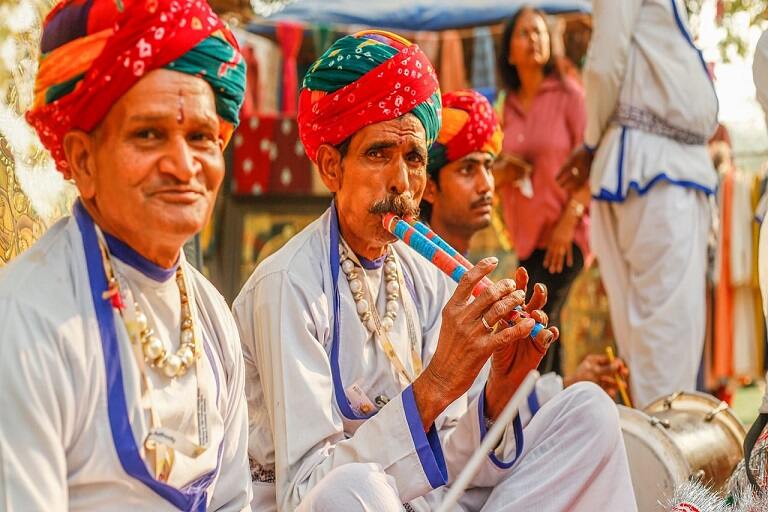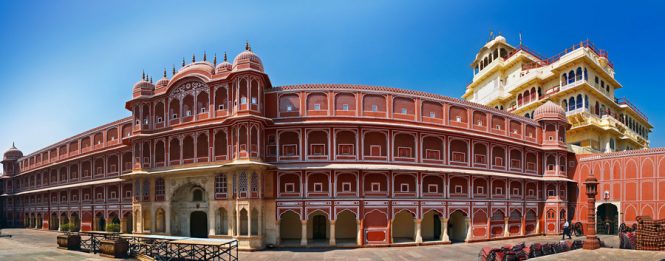
City Palace Jaipur – Everything You Need To Know About
Table of contents
Widely popular as the Pink City, Jaipur is known for being a major attraction in the Rajasthan state, India. Back in 1727, Jaipur has been founded by the infamous Maharaja Sawai Jai Singh II and developed with old age attractions. Known for the remarkable past, City Palace Jaipur is one of the important places in the city. This heritage monument boasts the blend of Mughal, European and Rajputana architecture together and as a result, this palace stands out as a symbol depicting the richness and royalty of the Indian history. The City Palace Jaipur is actually a big complex located inside a portentous building with other halls, palaces, gardens, gateways and holy shrines. This place is actually built as a residence for the royal families.
History
City Palace, Jaipur was constructed between 1729-1732, in Jaipur as it paints the picture of heritage and rich culture. Sawai Jai Singh II has started the work of this palace, exclusively the exterior architecture of the building. Moving from Amber, he has moved to the Jaipur city because of the increase in water shortage problem which resulted in an inadequate supply of water to people. Further, he called Vidhyadhar Bhattacharya, a Bengali Architect who has designed the complex following the rules of Vastushastra which is why till today, City Palace is listed as the prime attraction of the state.

Architecture
The City Palace, Jaipur contains pavilions, gardens, and temples of different shapes and sizes. There are huge gateways which provide entry to the complex like the Tripoli (Three gates), the Udai Pol and the Virendra Pol. While the latter two are open for public, the former one allows the royal families to pass through it. The essential highlights of the place include the Chandra Mahal, the Mukut Mahal, the Shri Govind Dev Ji Temple, the Maharani’s Palace, the Mubarak Mahal, and the City Palace Museum.
About City Palace, Jaipur:
- Distance from Airport: 12.0 KM from Jaipur International Airport.
- Location: Jaleb Chowk, Near Jantar Mantar, Tripolia Bazar, Jaipur, Rajasthan.
- Type of Place: Palace complex lying in the heart of Jaipur city.
- Opening Hours: 9 AM – 5 PM.
- Entry Fee: Charges are different for different places inside the Palace. However, Indians should pay INR 100 for exterior spaces and INR 130 for the museum. Foreigners should pay INR 500 for exterior spaces and INR 900 for the museum. Additional INR 150 is charged for carrying video graphical cameras and therefore, you can buy the composite tickets as well.
- Visit Duration: 3-4 hours (Depends on the individual).
- Activities: Sight-Seeing, Photography, Learning History, Learning programs for Children, Shopping at local shops.
- Availability of Guides: Guides are available in different languages and the fee varies based on the number of people.
- Tripadvisor Rating: 3.5/5
- Architect: Vidhyadhar Bhattacharya
- Structural System: Red and Pink Sandstone.
- Style: Fusion of Chalukya Architecture, Rajput Architecture, Mughal Architecture and Shilpa Shastra.
- Best time to visit: September to February.
- How to reach: Directly accessible from the city’s center, you can take a cab, auto rickshaw or a bus.
Facilities at two Public Gates
- Udai Pol: Ticket Counter, Golf Cart, Drinking Water, Cloakroom, Washrooms, Paid Parking, Bardari Restaurant and First Aid.
- Virendra Pol: Ticket Counter, Drinking Water, Reception for Audio, Golf Cart, Washrooms, Cloakroom and First Aid.
Inside City Palace, Jaipur
[table id=73 responsive=scroll/]
1. Chandra Mahal:
A seven-storied building, this Mahal has many floors with different names, Mukut Mandir, Chabi Niwas, Shri Niwas, Ranga Mandir, Pitam Niwas and Sukh Niwas. The entrance gate contains a beautiful peacock with several balconies along with a pavilion extending from the roof. Here, you can observe the panoramic views of the city and all of the segments in the palace contain mirror work with floral decoration accompanied with amazing paintings. Chandra Mahal is initially designed to be the residence for the descendants of the rulers. The ground floor or the mahal is kept open as a museum which exhibits manuscripts, carpets and other items. Sukh Niwas has a dining hall and a drawing room, both of them intensively decorated with paintings. Shobha Niwas, translated to Hall of beauty has decorative tiles and mirror walls made of gold and mica. Chavi Niwas, the fifth floor used to be the resting place for the Maharajas and lastly, the top floor is for the flag (furled and unfurled) showing if Maharaja was inside/away.

2. Mubarak Mahal:
A reception center, it is built back in the 19th century by Madho Singh II. This Mahal flaunts the European architecture combined with Islamic and Rajput styles as well. Developed as a museum, it now exhibits textiles, garments, embroidered clothes, Kashmiri Pashminas, Silk Sarees and Sanganeri Shawls as well. You can find a special set of 1.2-meter wide cloth that weighs around 250 kilograms, worn by the late Maho Singh I.
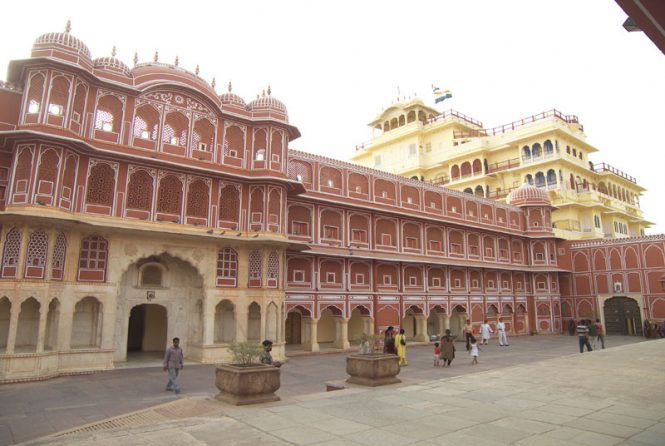
3. Pritam Niwas Chowk:
The inner compartment with four different gates, it is a courtyard which has four themes that display four seasons. All of these four gates contain patterns of peacocks out of which, the northwest gate depicts the autumn season. Dedicated to Lord Vishnu, this gate is rich with the decorations. The southwest gate is dedicated to Lord Shiva with flowers and petals, indicating summer. The Northeast gate is painted in green showing spring and is dedicated to Lord Ganesha. The Southwest gate contains flower patterns showing winter, dedicated to Devi, the Goddess.

4. Diwan-I-Aam:
Referred as Sabha Niwas or the hall for the public; it has bright red and gold ceilings furnished with warm colors. The hall is actually an art gallery with miniature Persian, Mughal and Rajasthani paintings, embroidered rugs, ancient texts, carpets, and shawls. The hall also has a Golden throne, Takth-e-Rawal carrying the palanquin bearers and the elephants made of marble rock.
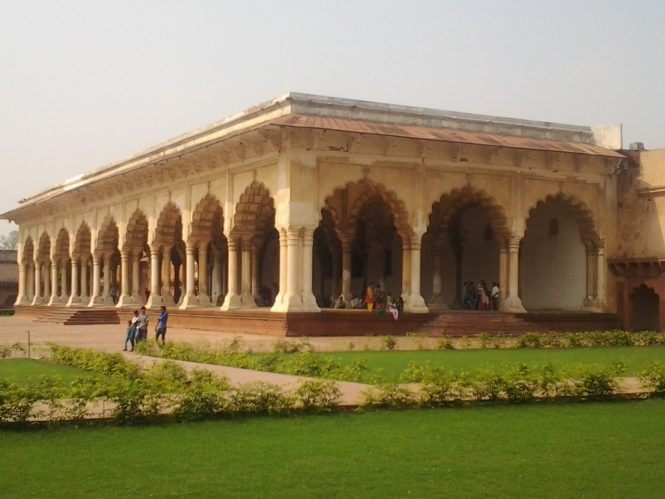
5. Diwan-I-Khas:
A chamber full or marble, this is a private hall for the Maharajas. It contains two silver vessels of 1.6m height, that can hold to 4000 litres. These vessels are known to made from 14000 silver coins without any slightest soldering and therefore, both of them weigh around 340 kgs. The prominence of these vessels is that they have been recorded in the Guinness Book of World Records as the largest silver vessels. The reason behind the construction of these vessels is because Madho Singh II on his trip to England back in 1900 did not want to drink their water and carried the Ganga Jal in these vessels. However, this hall also has the crystal chandeliers.

Also Read: Why Rajasthan Is The Perfect Destination For Solo Travellers
6. Baggi Khana:
A legendary museum, it contains a collection of Palanquins, carriages and European cabs that were referred as Baggis. You can find an ancient Victorian Bhaggi here which was gifted by Prince of Whales back in 1876 along with a Mahadol made of simple bamboo to carry the Hindu Gods and priests, especially during festivals.
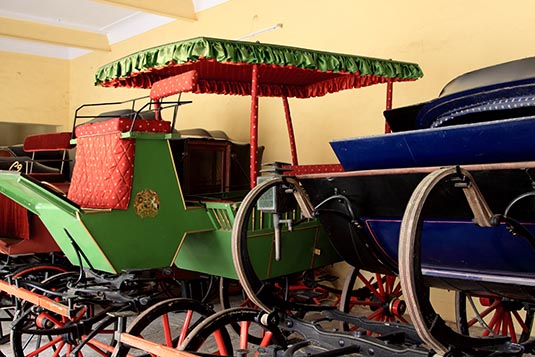
7. Maharani Palace:
The Maharani Palace was constructed as the residence for the royal family queens and now is another museum which displays the weapons of different periods. The ceiling of the place is known for the frescoes made of gold.
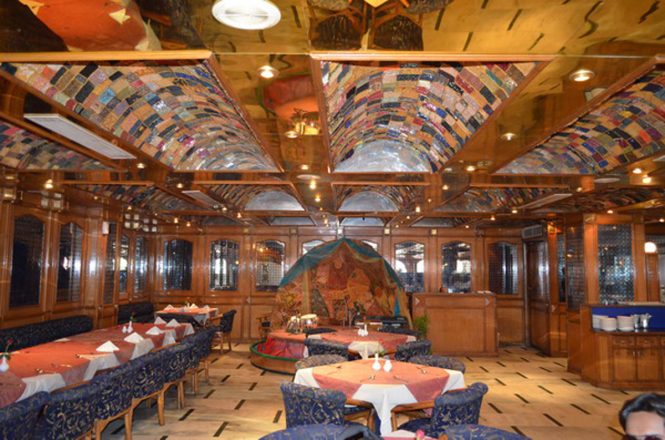
8. GovindDev Ji Temple:
A shrine dedicated to Lord Krishna, it is a temple of the 18th century which has Indian art paintings and as well as the European chandeliers as well. The ceilings are made of gold.
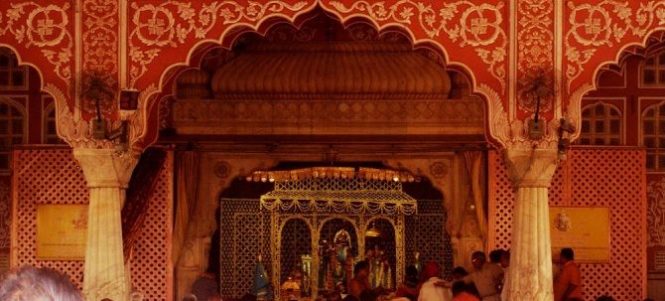
Traveler Tips about City Palace Jaipur:
- A vast complex as it is, you have to walk a lot and therefore carry a water bottle with you (Drinking water is of course available).
- Dress comfortably along with flat footwear and good shoes for an easier experience.
- The City Palace Jaipur is disabled friendly following the barrier-free rules and therefore, you don’t have to worry.
- Enquiry for guides and other information is available at the entrance.
- You can purchase the individual, composite or package tickets for the palace and its parts based on what you want to visit.
Interesting Facts about City Palace Jaipur:
- The City Palace is originally built by Sawai Jai Singh, who is also the founder of the city. He also managed to build Hawa Mahal and Jantar Mantar which are nearby.
- Sir Samuel Swinton Jacob is another architect who contributed to the design of this place along with the Sawai Jai Singh, himself.
- Apart from the main gates, there are four other gates in the third courtyard that depict the seasons.
- As of today, the City Palace Jaipur contains two parts; one opened for the public and the other for the royal families. The descendants of the rulers live here, till today.
- The Silehkhanna is a museum full of handguns and weapons. One can find a wide range of arrows, axes, knives, and swords in this place.
Nearby places to visit in Jaipur:
- Birla Temple
- Alber Hall Museum
- Nahargarh Fort
- Hawa Mahal
- Swami Narayan Temple
- Amber Fort.
Nearby Eateries:
- The Bardari Restaurant: Located in the premises of the City Palace Jaipur; it serves both Indian and as well as the International Cuisines.
- The Palace Cafe
- Midtown Multi Cuisine Restaurant
- Shree Gopi Pavitra Bhojanalaya
- Snack Bar
- Agrawal Pavitra Bhojanalaya
Accessibility of City Palace Jaipur:
- The entry points to the museum allow the visitors from where there is limited mobility. Therefore, you can opt for the golf cart ride which takes you to the three courtyards and the galleries.
- The surfaces will lead to the major City Palace Jaipur attractions which are ramped. You can have a comprehensive audio guide for the impaired and a braille script is also available.
- The Sculpture Lumiere show during nights will allow the users to know the history of Jaipur, the complex and the events that happened.
- Some galleries inside the palace are restricted from touching and you can find different types of signages that explain the history.
- The Royal Grandeur tour is known to take you through the galleries conducted by volunteers, specials, and experts who will offer you different kind of interpretations.
- If you are someone who is intuitive to know something, there are many packages that can be bought which encourage the outreach of City Palace Jaipur.
Conclusion: A visit to City Palace Jaipur is nothing but a journey into the bygone era. Taking you to experience aura, richness, and wonder; there are plenty of reasons why one should visit this palace. A mere visit will fill you with amazement, heritage, history, and culture about the life of rulers, queens, and paramours. One can spend a whole day in this palace by loitering in the gardens, courtyards and the galleries.
City Palace Jaipur – FAQ:
What is the exact Location of City Palace Jaipur?
As a complex, this gigantic structure is located on the Pichola Lake banks. Following the grid pattern of the city, it is towards the northeastern side of the center.
What is the best time to visit City Palace Jaipur?
If you don’t want to be discomforted by the scorching heat, the best month to visit the palace is between October-February. The weather becomes pleasant towards the winter. However, if you are looking to visit it in Summer, make sure that you are ready to face the humidity.
What are the operating hours of the Palace?
The Palace is usually open from 9 AM every day to 5 PM. However, on Diwali, Holi and few other selected holidays; it stays closed.
Table of contents
Trending blogs for you
 18002099100
18002099100



